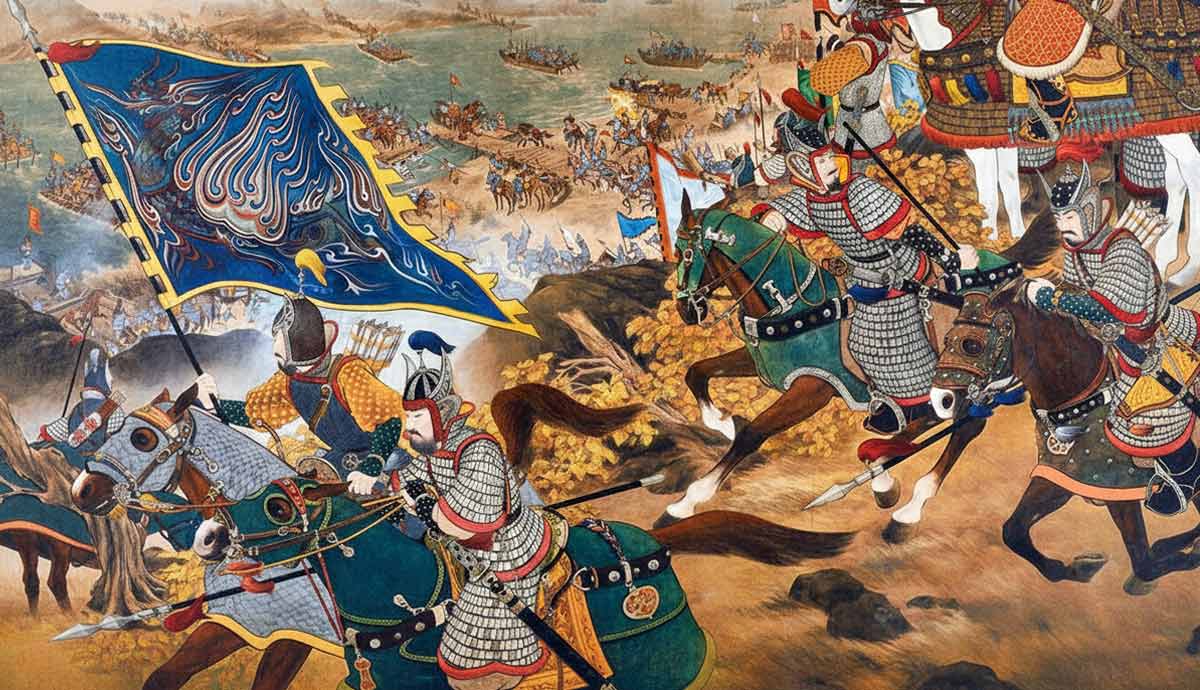Koreas Three Kingdoms Explained (Goguryeo, Baekje, and Silla)
Although three rival kingdoms of Goguryeo, Silla and Baekje existed on the Korean Peninsula, each shared a common language and cultural heritage. The three existed roughly from the 1st Century BCE to around 668 CE. They occupied the entire peninsula, as well as part of Manchuria and Liandong.Each shaped Korean civilization. However, all things change, so the political rivalry and differences disappeared. Silla eventually unified the peninsula in 668 CE with the Tang Dynastys assistance.Silla: The Oldest of ThreeFunerary artifacts from the 5th Century depicting mounted warriors. The Silla kingdom created a military elite comprised of promising youth known as the Hwarang, meaning Flower Knights. Source: National Museum of KoreaSilla, the oldest, was founded around 57 BCE by Bak Hyeokgeose. This earliest kingdom lay in Koreas southeast.The kingdom originated as a confederation of Jinhan tribes, with its capital at Seorabeol (modern-day Gyeongju). The first ruler, Hyeokgoese, ruled from 57 BCE to 4 CE. According to legend, he emerged from a shining egg found near the Naheul River, marking the beginning of Sillas dynasty.The capital, Seorabeol, quickly grew as Silla grew in wealth and importance. The dynasty laid solid groundwork for a centralized administration, a strong king, and an economy. Nestled in the southern corner, Sillas port network, like Ulsan, poured goods from China, Persia, and beyond. In return, goods exported included gold, ceramics, and lacquerware. Sillas connections spread to China, Japan, and further West.Daereungwon Tomb Complex, by Daniella RomanoThe official adoption of Buddhism occurred in 527 CE. This influenced government, art, architecture, morals, and literacy. External economic and social influences would change Silla, especially as the Silk Roads western terminus.Consistently militarily strong, Sillas army never ranked as the regions largest. However, due to its centralization and constant wars with other Korean peninsula powers, it remained experienced and formidable. Later, the Silla would cleverly ally with the Tang.Baekje-The Korean PhoeniciaDaereungwon Tomb Complex, by Daniella RomanoThis kingdom, founded in 18 BCE by King Onjo, originated on the Han River, later expanging southwest. King Onjo expanded Baekje via war, taking good farmland and increasing coastal access. This, plus their access to the Yellow and South Seas, created the greatest maritime entity of the three kingdoms.Baekje soon became a cultural and economic hotspot. From China came their writing system, better metallurgy and architecture, and Buddhism (384 CE). Contact with Yamato Japan meant that Baekje monks, scholars, and merchants added their own unique color. Assimilation would become deep in families like the Kudara no Konikishi clan, benefiting both societies. In all things maritime, Baekje shone.Dubbed the Phoenicia of East Asia, Baekje progressed in its shipbuilding and navigation. Able to utilize their long-distance ocean travel, they opened their country and beyond. Their ability to move people and materials rivaled the other Korean kingdoms. This tradition proved valuable later on.Goguryeo: The Mightiest of ThreeDaereungwon Tomb Complex, by Daniella RomanoOf all Koreas Three Kingdoms, Goguryeo emerged as the toughest. Founded by King Dongmyeong in 37 BCE, Goguryeo lay situated near the Yalu River in the northern Korean mountains. He and later kings established a hierarchical government, which helped establish stability. Protected by these mountains, Goguryeo battled Silla, Tang China, Baekje, and others. Like Silla, their military remained disciplined and tough.Goguryeo experienced its greatest expansion under Gwanggaeto the Great (391-413 CE). His reach went past Korea into Manchuria and even parts of Mongolia. Goguryeo would remain a power for decades, protected by its military aristocracy and mountain fortresses.Cultured like their two Korean opponents, the Goguryeo saw themselves as descended from divine sources, which strengthened their sense of destiny. However, like Silla, Goguryeos and Baekjes futures would be intertwined. Indeed, modern Koreas name was derived from Goguryeo.The End of Three ErasMap of the Tang Dynastys Empire. Source: Wikimedia CommonsFor well over five centuries, trade and conflict swirled around Korea. Amidst this swirl, in 645, Sillas Queen Seondeok approached the Tang Dynasty. Silla faced a strong Goguryeo-Baekje alliance. With repeated invasions, the duo repeatedly invaded, devastating the country. Isolated with few allies, the Tang represented an option.The Tang responded, seeing an opportunity to eliminate Sillas foes, especially Goguryeo. The Tang-Silla forces defeated Baekje at the 660 Battle of Hwangsanbeol. Goguryeo proved a tougher nut to crack, a tribute to its location and tough military.A simultaneous north-south invasion took six years to break Goguryeo. By 668, it collapsed under external and civil war. Yet by 670, all soured. Silla and the Tang bitterly fought over the peninsula. Imperial China sought to govern the reluctant Koreans directly.The Silla-Tang War (670-676) ended in a Silla victory. This victory marked the beginning of the Unified Silla era (668-935). This perhaps is one of Koreas greatest eras in religion, government, and culture.


